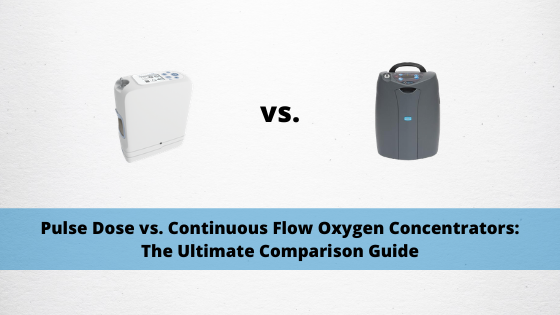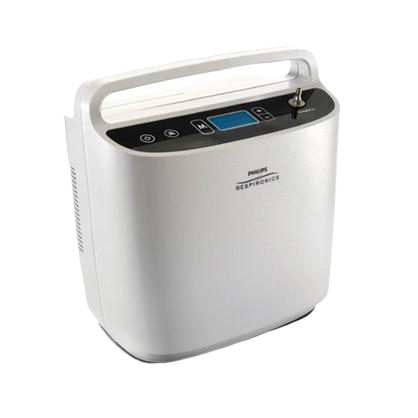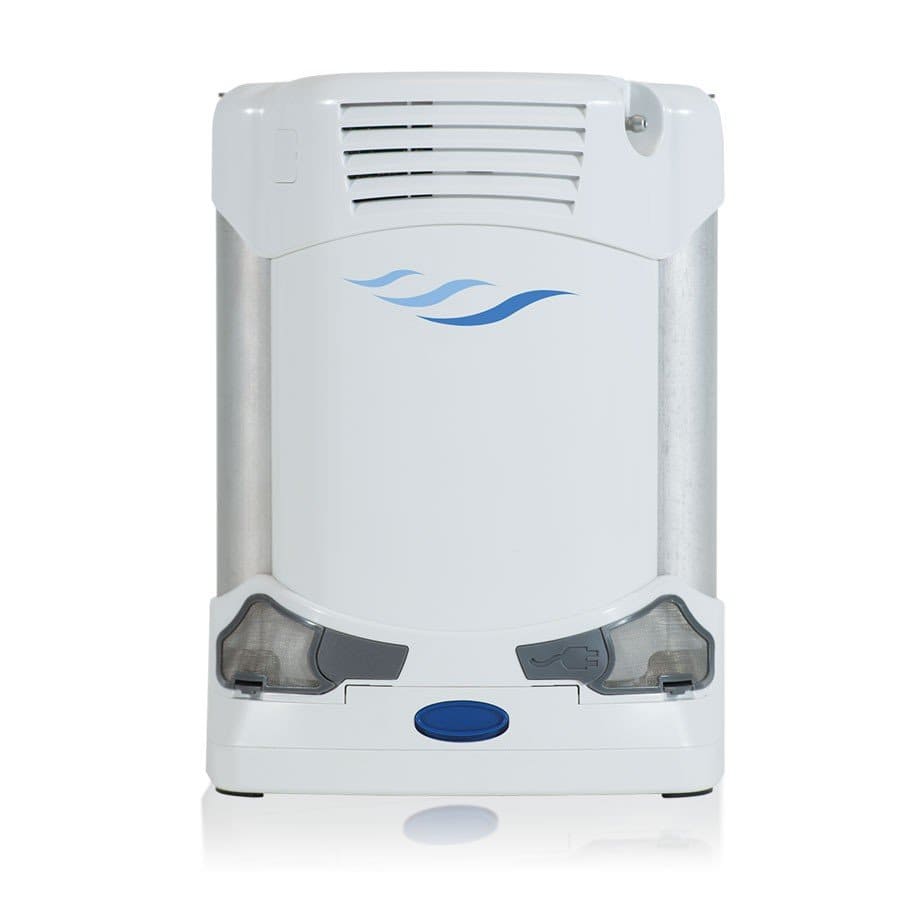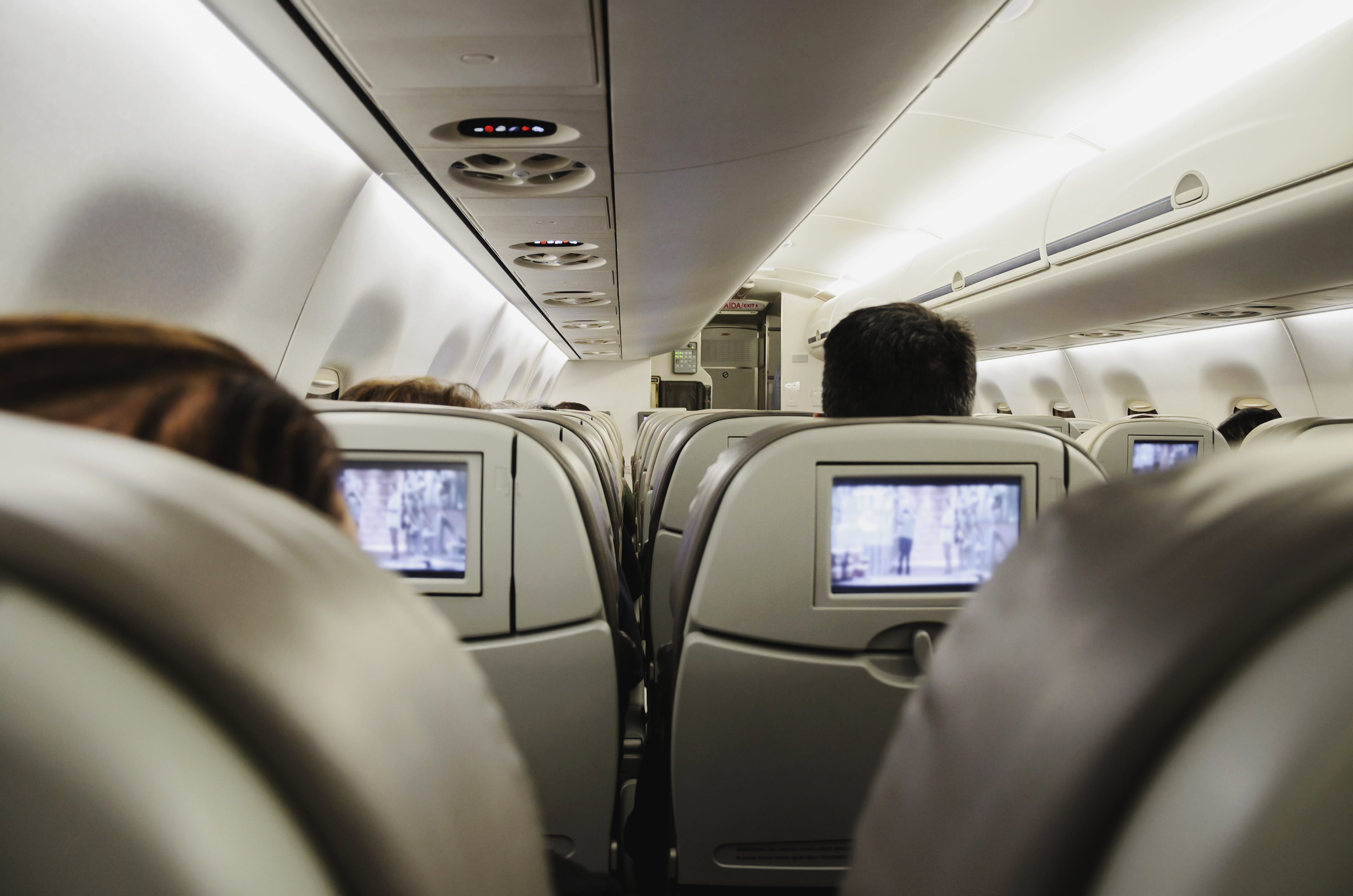
If you suffer from any number of respiratory ailments, you’re likely well aware of the important role oxygen therapy plays in your life. COPD patients, in particular, are able to significantly reduce chronic symptoms like breathlessness and chest pain by using supplemental oxygen on a daily basis. On the other hand, short-term oxygen therapy can assist patients in recovering more quickly after a hospital visit.
But if you’ve kept up with our blogs here at LPT Medical, you know that the way oxygen is administered is often just as important as using supplemental oxygen in the first place. Receiving too little oxygen might cause a flare-up in your symptoms, whereas receiving too much oxygen could lead to oxygen toxicity and other health complications.
One of the first things you should understand about oxygen administration is the difference between a pulse dose oxygen concentrator and a continuous flow oxygen concentrator. While each of these oxygen delivery methods is viable, they each have their pros and cons, and your oxygen therapy experience will vary greatly depending on which one you choose.
Ideally, this post will cover everything you need to know about pulse flow and continuous oxygen concentrators. However, if you still have questions, fill out the form to the right of the page and one of our respiratory specialists will reach out to you.
{{cta('fa8abc2a-1e88-4fa3-82fd-1cb5b9ed43b2','justifycenter')}}
What is a Continuous Flow Oxygen Concentrator?
As the name suggests, a continuous flow oxygen concentrator administers a constant flow of oxygen to the respiratory patient. A good analogy for continuous flow oxygen is a water fountain. When you use a water fountain, you don’t drink all of the water that is coming out of the spout. The water fountain puts out a consistent amount of water and the amount you drink is a product of the amount and the size of sips that you take. Similarly, with a continuous flow oxygen concentrator, the amount of oxygen that enters your lungs is a product of the amount and size of breaths that you take.

Another medical oxygen device that uses continuous flow oxygen administration are oxygen tanks. Since oxygen tanks used compressed oxygen they don’t need any electrical components to push oxygen out the nasal cannula. All they need is a nozzle that can regulate the amount of oxygen that is coming out of the tank. Liquid oxygen tanks use a similar principle, but instead of the oxygen being compressed inside the tank, it’s compressed as it exits the tank and turns to gas.
They Offer Great Versatility
Possibly the greatest thing about continuous flow oxygen concentrators is how versatile they are. Continuous flow units can be bought as either a portable or a stationary oxygen concentrator (home oxygen concentrator) so you’ll have options based on your wants and needs. Portable oxygen concentrators have batteries so you can use them wherever you want, however, stationary concentrators need to be plugged into a wall to operate.

Another great thing about continuous flow portable oxygen concentrators is that they typically offer a pulse flow setting as well. This can be confusing to many people because when they hear the term “continuous flow portable oxygen concentrator” they assume that it doesn’t offer a pulse flow setting. However, oxygen concentrators like the SeQual Eclipse 5, for example, offer continuous flow settings 0.5-3.0 LPM, but it also offers pulse flow settings 1 through 9. This is much more than what your average pulse flow oxygen concentrator will provide.
They’re CPAP Compatible
COPD commonly coexists with sleeping disorders like obstructive sleep apnea in what’s known as COPD-OSA overlap syndrome. This is partially due to the fact that OSA and COPD are both common conditions, but the higher likelihood of peripheral edema and increased BMI associated with chronic bronchitis also promotes OSA. As such, someone with COPD is more likely to experience sleep disorders.

When a patient with OSA sleeps, their airways collapse making it difficult to breathe properly. If this person also has COPD, they’ll be more likely to experience complications at night due to the restricted airflow. In these situations, it’s advised that the patient uses both a continuous positive airway pressure (CPAP) machine and an oxygen concentrator while sleeping.
Continuous flow is the only type of oxygen administration that is compatible with CPAP and BiPAP machines. Some continuous flow oxygen concentrators can be attached directly to a CPAP machine, but others will require you to buy a “bleed-in adapter.” If you and your doctor determine that this is the best course of action for you, be sure to follow the directions closely in your oxygen concentrator user manual on how to set up and use the device correctly.
They’re FAA Approved
At this point in time, all continuous flow portable oxygen concentrators are approved by the Federal Aviation Administration (FAA) for in-flight use. What this means is that if you ever need to fly across the country or even outside of the United States, you can do so with your portable oxygen concentrator at your side the whole time. While there are no restrictions on oxygen concentrators and flight attendants aren’t allowed to stop you from bringing one on board, you should make sure to contact the airline at least 48 hours ahead of your flight to let them know you’ll have a POC with you. Typically, they’ll ask that you have at least 1.5 times as much battery life as the duration of your trip and they may have an extra charge for a carry on item as well.

They’re Heavy and Bulky
While continuous flow oxygen concentrators have plenty of benefits, we’d be remiss not to discuss the disadvantages as well. Possibly the biggest downside to these machines is that they’re bulky and heavy. Most continuous flow machines weigh between 10 and 20 pounds which tends to be too heavy for most people to sling over their shoulders. Instead, most patients find it more comfortable to use a wheeled cart which either comes with the concentrator or is sold separately.
One people dislike using continuous flow machines is that they’re more cumbersome and difficult to take out of the house. If you ever need to take public transportation, you may find yourself stressing out about your concentrator rather than focusing on what you’re doing. Taking a flight is especially difficult because there’s already limited foot space on a plane, but with a continuous flow POC, you’ll have even less.

They Have Limited Battery Life
Battery life is one of the most important aspects of a portable oxygen concentrator because it determines how long you can be out of the house without having to find a place to recharge. Unfortunately, continuous flow machines don’t offer much in the way of battery life. The average machine will offer between 1 and 10 hours of freedom depending on the flow setting you use and the type of battery you are using.

While this may sound like a lot at first, once you actually get out of the house and start doing things, you’ll be surprised at how fast the time goes. You may find that it’s difficult to take long trips unless you bring extra battery packs. However, even if you do, you’ll have to stop frequently to replace the batteries.
What is a Pulse Dose Oxygen Concentrator?
Pulse dose is the other major type of oxygen delivery along with continuous flow. Whereas continuous flow has been around throughout the whole existence of oxygen therapy, pulse dose is a fairly new technology. Rather than putting out a constant stream of oxygen, a pulse dose machine only puts out oxygen when the patient inhales. Essentially, they’re designed to detect a change of pressure in the user’s nasal cannula when they begin to inhale. It then administers a precisely timed oxygen bolus (dosage).

Pulse dose regulators (oxygen regulators) can be attached to oxygen tanks and they perform the same function as a pulse dose oxygen concentrator would. Normally, oxygen tanks put out continuous flow oxygen, but the regulator will give you precise doses of oxygen that can help you ration the oxygen that’s left in the tank. Certain oxygen conservers can even be used with liquid oxygen tanks.
They’re More Technologically Advanced
One of the first things you’ll notice about pulse dose oxygen concentrators is that they’re significantly more complex than continuous flow oxygen concentrators; not in how difficult they are to use, but in the features that they offer. The Caire FreeStyle Comfort, for example, offers a built-in program called CAIREView. This program enables you to track important information about your oxygen usage including your time of use, oxygen flow setting, and more.

CAIREView is also equipped with something called “telehealth technology.” We talked about this extensively in a previous post, so feel free to check it out if you want to learn more. However, if you don’t want to get into the details, just know that it’s a technology that could be beneficial to a great number of people. Essentially, what it does is send information via a secure network to both the oxygen manufacturer and your doctor allowing them to see up-to-date information about your oxygen usage and the integrity of your portable oxygen concentrator.

While this is one of the first examples of the use of telehealth technology in oxygen concentrators, it’s a good sign for anyone who’s interested in achieving more freedom and independence from their portable oxygen device. With CAIREVIew, you’ll be able to leave your home knowing that you’re always being monitored by a medical professional. If something were to go wrong with your device, the oxygen manufacturer may be able to troubleshoot and fix it without you ever having to ship the device in and wait weeks or months to get it back. It could also save you a significant amount of time and money.
They’re Small and Lightweight
Possibly the greatest benefit to using a pulse dose concentrator over a continuous flow concentrator is how small and lightweight they are. COPD has long been considered a debilitating disease because it’s characterized by chronic lung inflammation, breathlessness, and chest pain. What’s more, in the past, COPD patients had to carry around heavy oxygen tanks which set them back even more.

Pulse flow oxygen concentrators, fortunately, are the lightest oxygen therapy devices ever produced. Due to the way that pulse dose technology works, these concentrators are able to administer oxygen much more efficiently. Unlike continuous flow concentrators, there is no “wasted” oxygen with these units. All oxygen that is put out of the device will be inspired by the oxygen patient. As a result, oxygen manufacturers are able to make them much smaller and lighter to carry.
Another reason pulse dose oxygen concentrators are so efficient is that they have the best batteries offered on the market. These concentrators use lithium-ion batteries which are the same ones that are used in common electronic devices such as cell phones, tablets, and laptops. In the future, you can expect this technology to advance even more quickly due to the high demand for light and efficient portable electronic devices.
They Offer Greater Freedom
Freedom is one of the most fundamental human rights. Without freedom, we would not be able to pursue our dreams, go where we want, and do as we please. Unfortunately, chronic respiratory conditions like COPD and cystic fibrosis can restrict your freedom significantly. Many people with COPD spend their life letting their disease control and define them rather than taking control of their symptoms and taking their life back.
.png)
Instead of forcing you to depend on friends and loved ones like oxygen tanks do, pulse dose oxygen concentrators allow you to experience full freedom and independence. You’ll never have to go out of your way to refill your oxygen tank or rely on other people to help you transport your oxygen therapy machine. Since they’re so simple to use, there are no complicated functions that you’ll need to learn about to get started. Simply turn the power on, adjust your flow setting, and experience full freedom.
They’re FAA Approved
Just like continuous flow portable oxygen concentrators, pulse dose machines are approved by the FAA for in-flight use. In fact, pulse dose machines are favored by most airlines because they offer greater battery life and they take up much less space on the plane. They’re so small that you won’t even need to set them on the floor during take-off and landing, you can simply rest it under your arm where it will be secure.

Another reason pulse flow concentrators are great for flights is because of their long battery life. A typical flight within the country will take around 2 to 5 hours, so having a concentrator like the Inogen One G5 which offers up to 13 hours of battery life on one charge will make this a breeze. Unfortunately, the same can’t be said for continuous flow units. Since the batteries only last a couple of hours, you’re likely going to need to carry one or two extra batteries at the very least. This also means you’ll be spending more time swapping out batteries instead of enjoying your flight.
Conclusion
Currently, both continuous flow concentrators and pulse dose concentrators are viable for long-term oxygen therapy. Both types of oxygen administration afford you the freedom you need to go about your daily life without concern that your oxygen needs are met. However, if you want to get the oxygen machine that’s best for you, you should take some time to consider each option.
Continuous flow portable oxygen concentrators are very versatile. If you suffer from COPD-OSA overlap syndrome, your doctor may advise that you use both a CPAP machine and an oxygen therapy device at night. Continuous flow machines can easily be attached to CPAP and BiPAP machines at night, allowing you to sleep restfully without disruption. Many modern continuous flow concentrators also offer a pulse flow option which will afford you more options.
Pulse dose portable oxygen concentrators are best for people who want the lightest and most efficient machine on the market. The Inogen One G5, for example, weighs only 4.7 pounds which is less than half the weight of the lightest continuous flow units. They’re also significantly smaller meaning you’ll be able to carry them under your arm without bumping into anything or anyone around you. In general, pulse dose machines are the best option for the greatest number of people, but it’s important to speak with your pulmonologist as well as our respiratory specialists before making a decision.
Fill out the form at the side of the page and we’ll get back to you as soon as possible to discuss your portable oxygen concentrator options.

